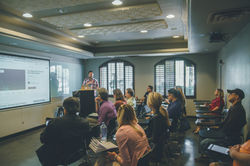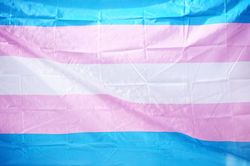
Our History
The need for collaboration and coordination of services for victims of domestic and sexual violence in the St. Louis region has been a priority of service providers since the early 1990’s (1980s) Agencies who were members of the Missouri Coalition Against Domestic Violence (MCADV) met as a regional committee on alternating months (since 1982) for years thus providing structure for the development of subcommittees to address specific concerns in the St. Louis region. The creation of the DV 101 orientation which began as a full day of training provided a means for local agency staff, student interns and community volunteers to come together and learn about the dynamics of domestic violence as well as to have the opportunity to network and learn about community resources. This unique approach to the St. Louis area collaboration resulted from the agencies desires to conserve their resources and work together to train staff, interns, and volunteers from all the agencies. This training/orientation is required by the standards set forth by MCADV and is the responsibility of all agencies to provide 40 hours this vital information; by creating the DV 101 training, the Regional Committee fulfilled a portion of this obligation and demonstrated successful collaboration.
In addition to the coordination of training efforts, the Regional Committee included subcommittees that focused on annual awareness month activities/events, media awareness, WomenSOLE (Women Speaking Other Languages than English) and Same Sex DV. Over the years, the work of the St. Louis Regional MCADV Committee expanded and included numerous activities which were not initiated by the state coalition. In 2008, following a meeting with leadership of MCADV, the St. Louis region discerned that the work to be done in the St. Louis region did not conform to the criteria set forth for the MCADV Regional Committee. A local network, SLEVAWN, or the St. Louis Ending Violence Against Women Network, was established on September 9, 2008. The MCADV Regional Representative would continue with their responsibilities, and meetings would continue to be held for both organizations.

 |  |
|---|---|
 |  |
 |  |
 |  |
 |  |
 |  |
In addition to the coordination of training efforts, the Regional Committee included subcommittees that focused on annual awareness month activities/events, media awareness, WomenSOLE (Women Speaking Other Languages than English) and Same Sex DV. Over the years, the work of the St. Louis Regional MCADV Committee expanded and included numerous activities which were not initiated by the state coalition. In 2008, following a meeting with leadership of MCADV, the St. Louis region discerned that the work to be done in the St. Louis region did not conform to the criteria set forth for the MCADV Regional Committee. A local network, SLEVAWN, or the St. Louis Ending Violence Against Women Network, was established on September 9, 2008. The MCADV Regional Representative would continue with their responsibilities, and meetings would continue to be held for both organizations.
As the Joint Orientation Training (JOT) to Violence Against Women training grew, there was consensus that the coordination of the sessions needed an individual to lead and coordinate securing the site, the presenters and assuring that the topics were updated as needed. The JOT Committee would continue oversight of content and assist with planning. In 2012, a Contract Position description was created and our first JOT Coordinator took the helm. This part-time position is funded by the membership dues of SLEVAWN.

With this decision came also the discussion of the structure of the organization and the members desire to remain a network without the encumbrance of 501c3 status and creation of a Board of Directors. A governance document was drafted and revised several times to assure that it would reflect the commitment and the work of the network as a whole. Leadership is provided by member agency volunteers. Member donations were streamlined into annual dues to support the efforts of SLEVAWN.
In 2014, the Advocacy and Action Committee facilitated the creation and training our Court Watch volunteers to observe the response of the court to petitioners in Adult Abuse Order of Protection Hearings. There were 56 volunteers who completed the initial training and began attending court proceedings in June. The outcomes and data collected were reported to SLEVAWN in August 2014 with a new commitment to establish the program with funding and a coordinator to oversee both the ongoing training and scheduling of volunteers as well as contact with the court regarding issues observed. Since 2014, Court Watch has continued its training of volunteers, participated in the Center for Court Innovation assessment process for St. Louis County, and provided training for judges and court personnel. This program continues be a program of SLEVAWN although funding for the project initially provided with grant funding, has been absorbed by funding resources through St. Martha’s Hall.

With this decision came also the discussion of the structure of the organization and the members desire to remain a network without the encumbrance of 501c3 status and creation of a Board of Directors. A governance document was drafted and revised several times to assure that it would reflect the commitment and the work of the network as a whole. Leadership is provided by member agency volunteers. Member donations were streamlined into annual dues to support the efforts of SLEVAWN.
In 2014, the Advocacy and Action Committee facilitated the creation and training our Court Watch volunteers to observe the response of the court to petitioners in Adult Abuse Order of Protection Hearings. There were 56 volunteers who completed the initial training and began attending court proceedings in June. The outcomes and data collected were reported to SLEVAWN in August 2014 with a new commitment to establish the program with funding and a coordinator to oversee both the ongoing training and scheduling of volunteers as well as contact with the court regarding issues observed. Since 2014, Court Watch has continued its training of volunteers, participated in the Center for Court Innovation assessment process for St. Louis County, and provided training for judges and court personnel. This program continues be a program of SLEVAWN although funding for the project initially provided with grant funding, has been absorbed by funding resources through St. Martha’s Hall.
 |  |
|---|---|
 |  |
 |  |
 |

In addition to Joint Orientation Training and Court Watch, this regional network provides a space for education, networking and information sharing between domestic and sexual violence agencies. Members are encouraged to support each other’s events and work together on systemic issues facing our region.
In January 2021, after much formal and informal discussion among member agencies, the network voted and passed a motion to change the name from SLEVAWN to the St. Louis Ending Domestic and Sexual Violence Network. Many individual members and member organizations serve and prioritize the individual suffering from domestic and sexual violence, regardless of their sex, gender identity, or sexual orientation. This name change was proposed to 1) Reflect the individuals and organizations for which this network provides support; and 2) To make this network a safe space for the diverse individuals and organizations which make up its members. The name change is one step of many to continue making this network and our organizations diverse and inclusive spaces while continuing to working to stop domestic and sexual violence in our region.